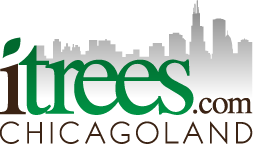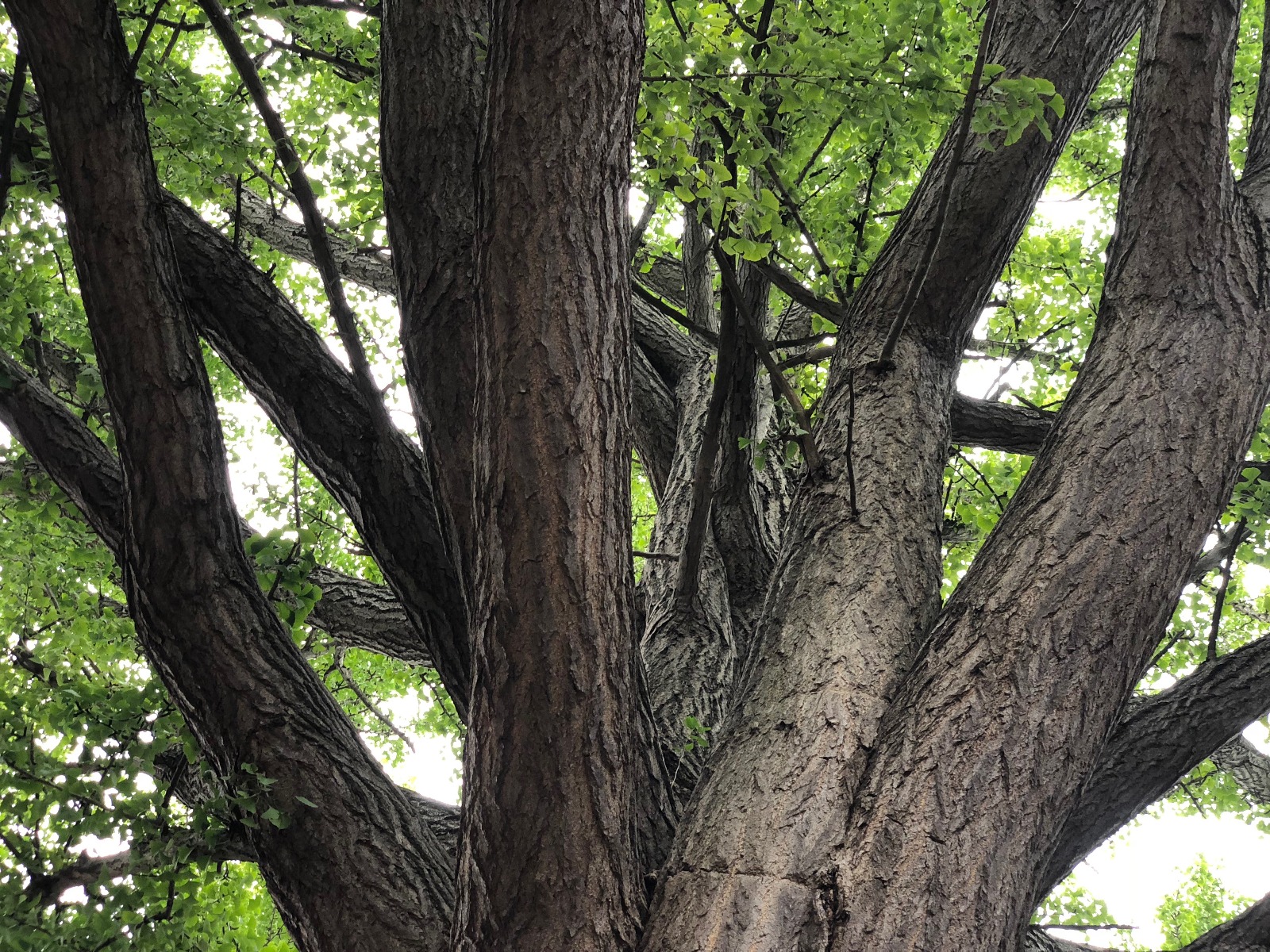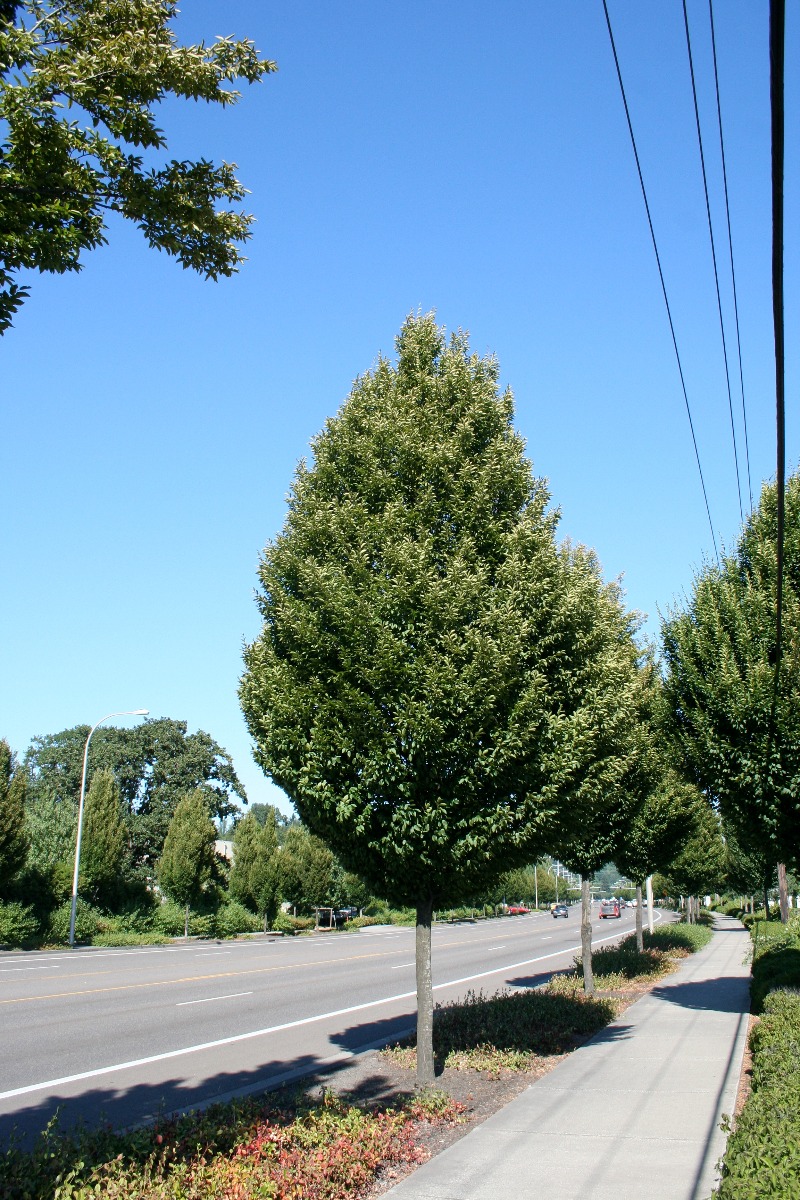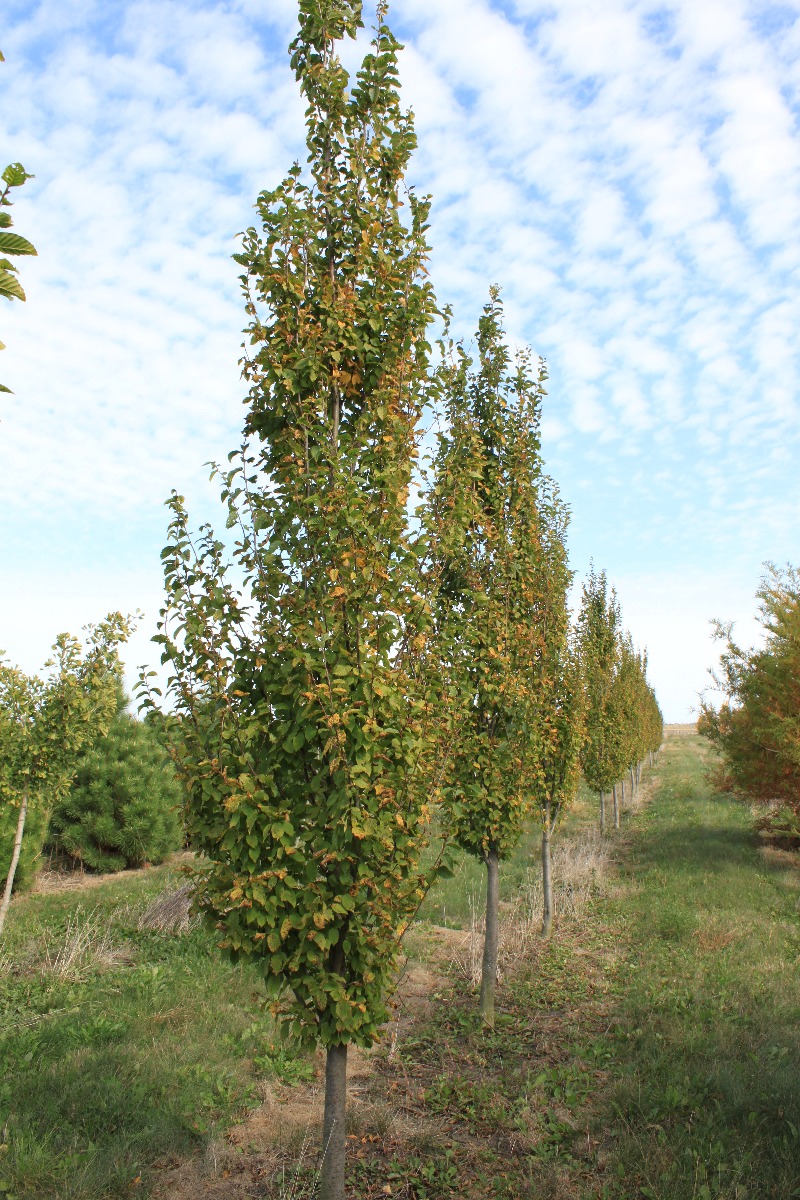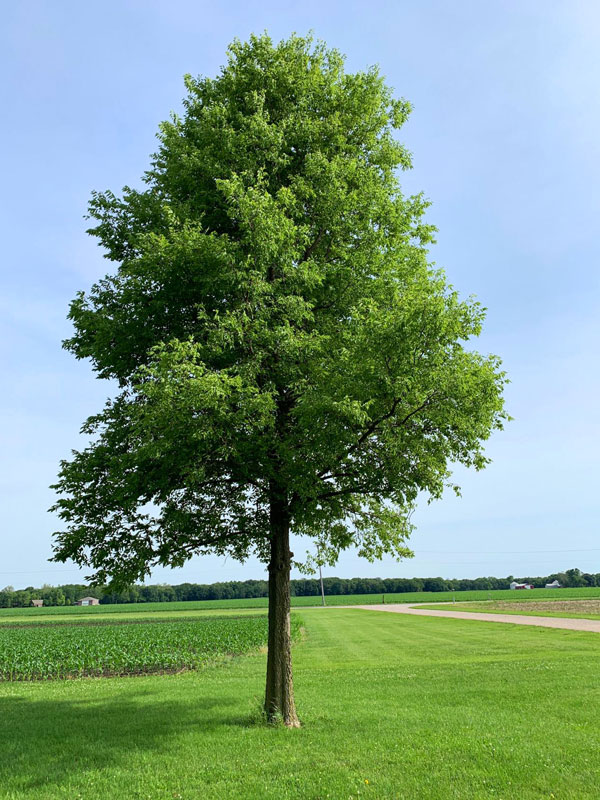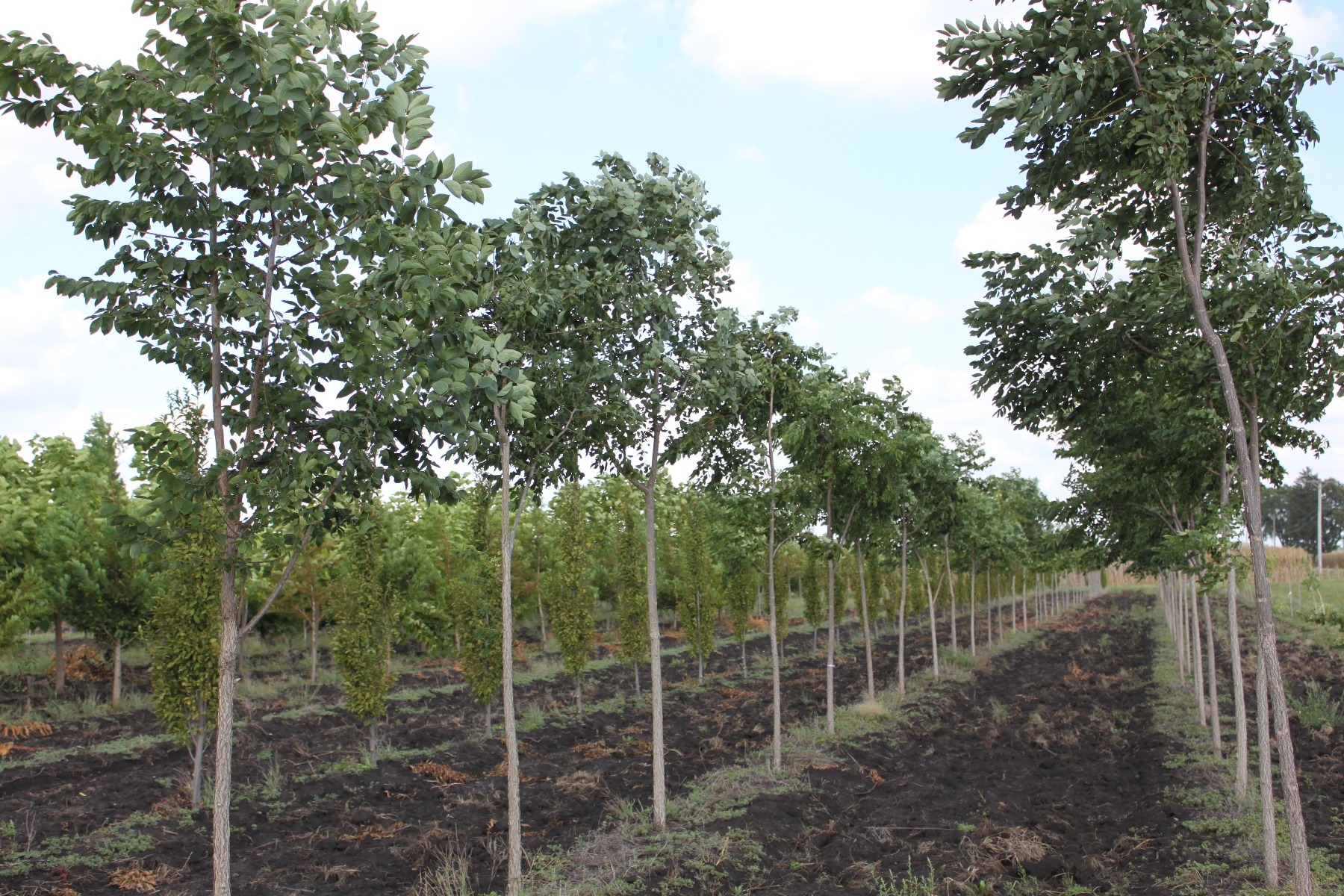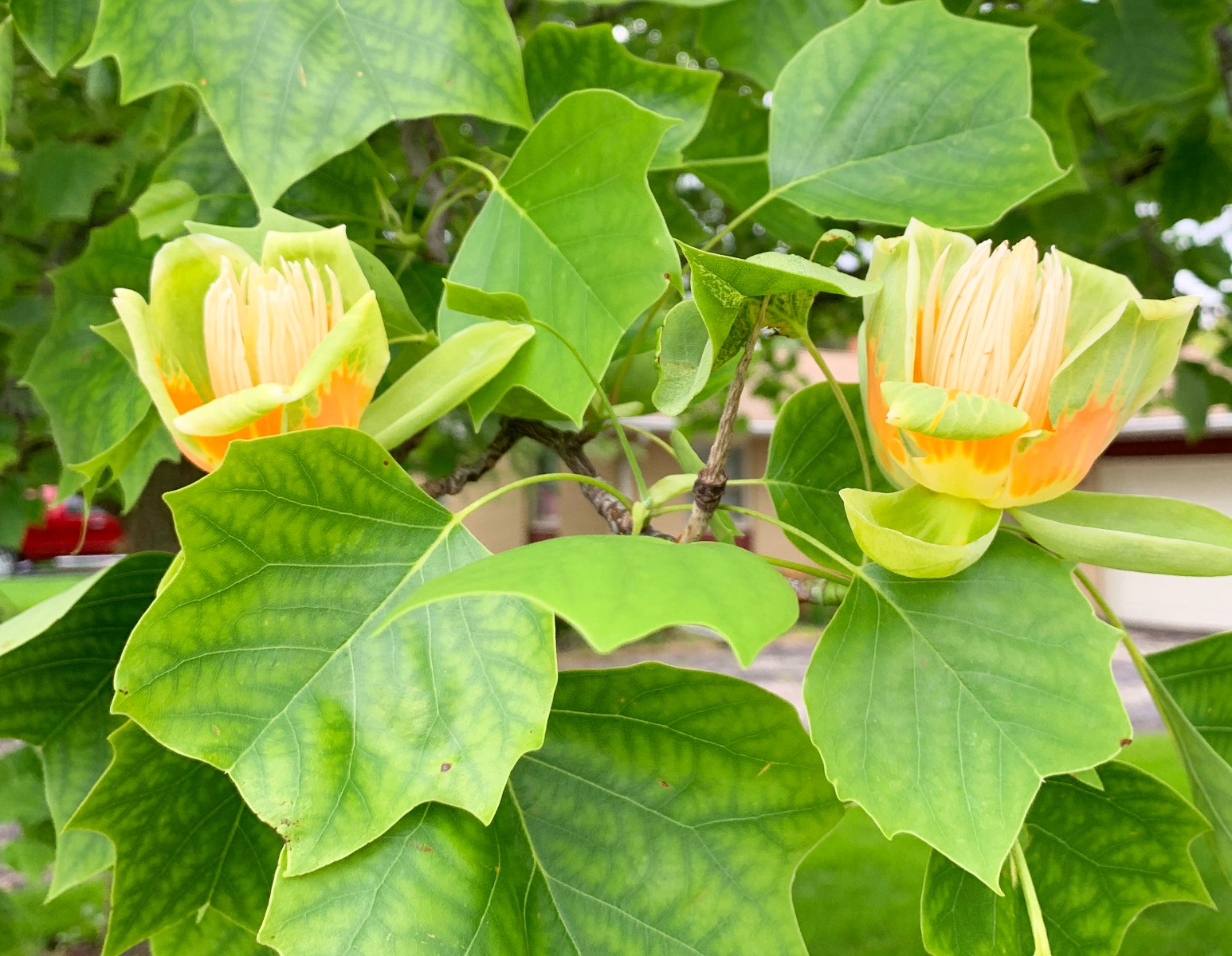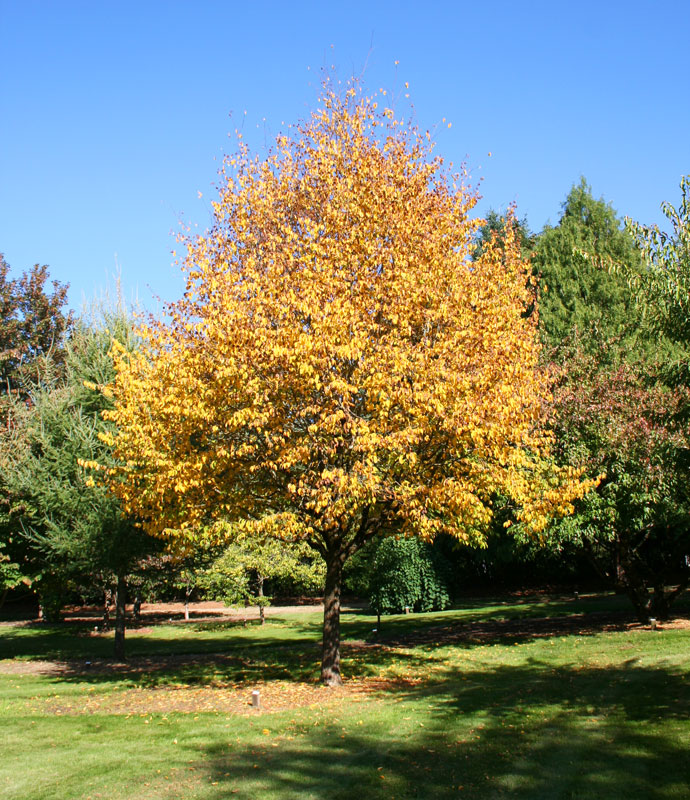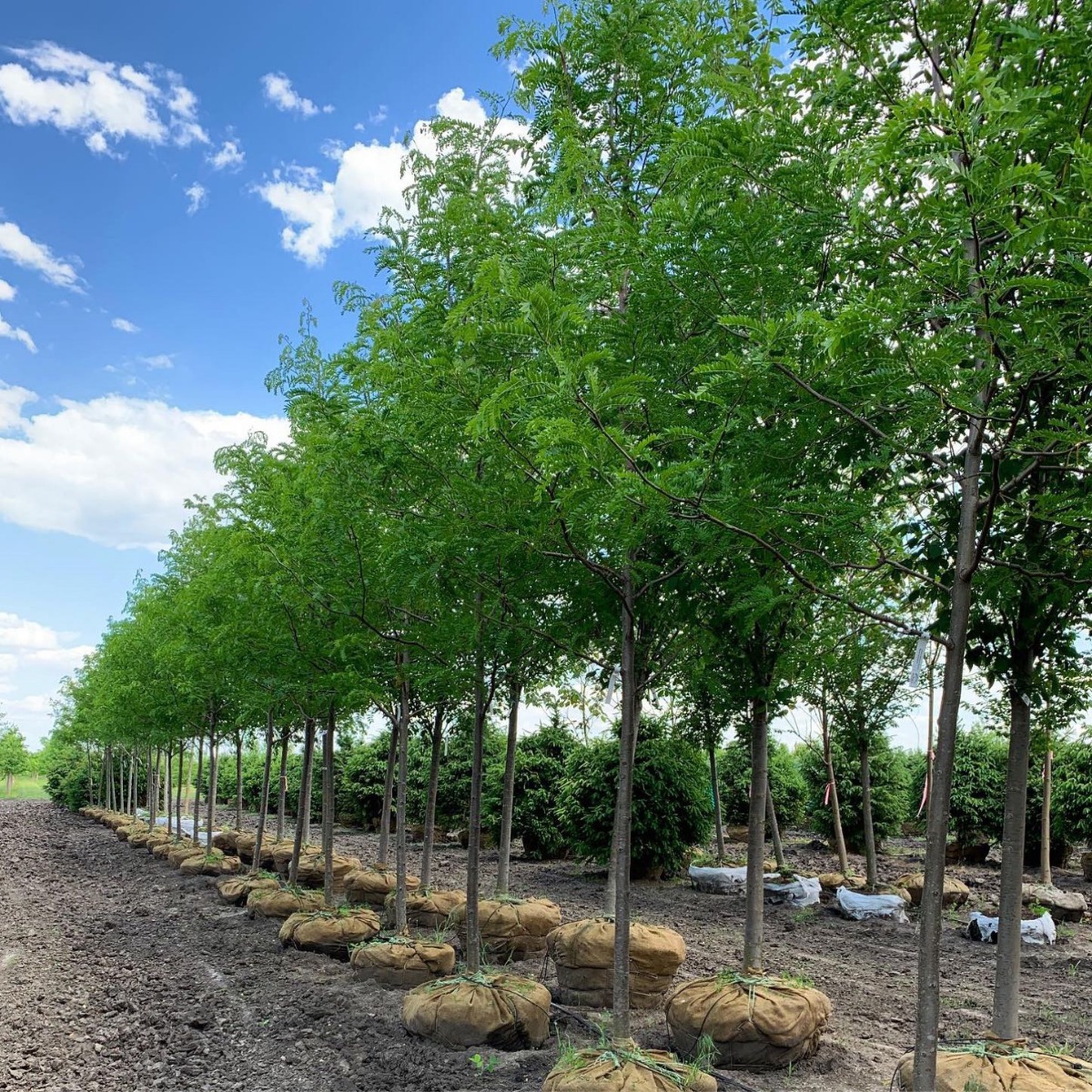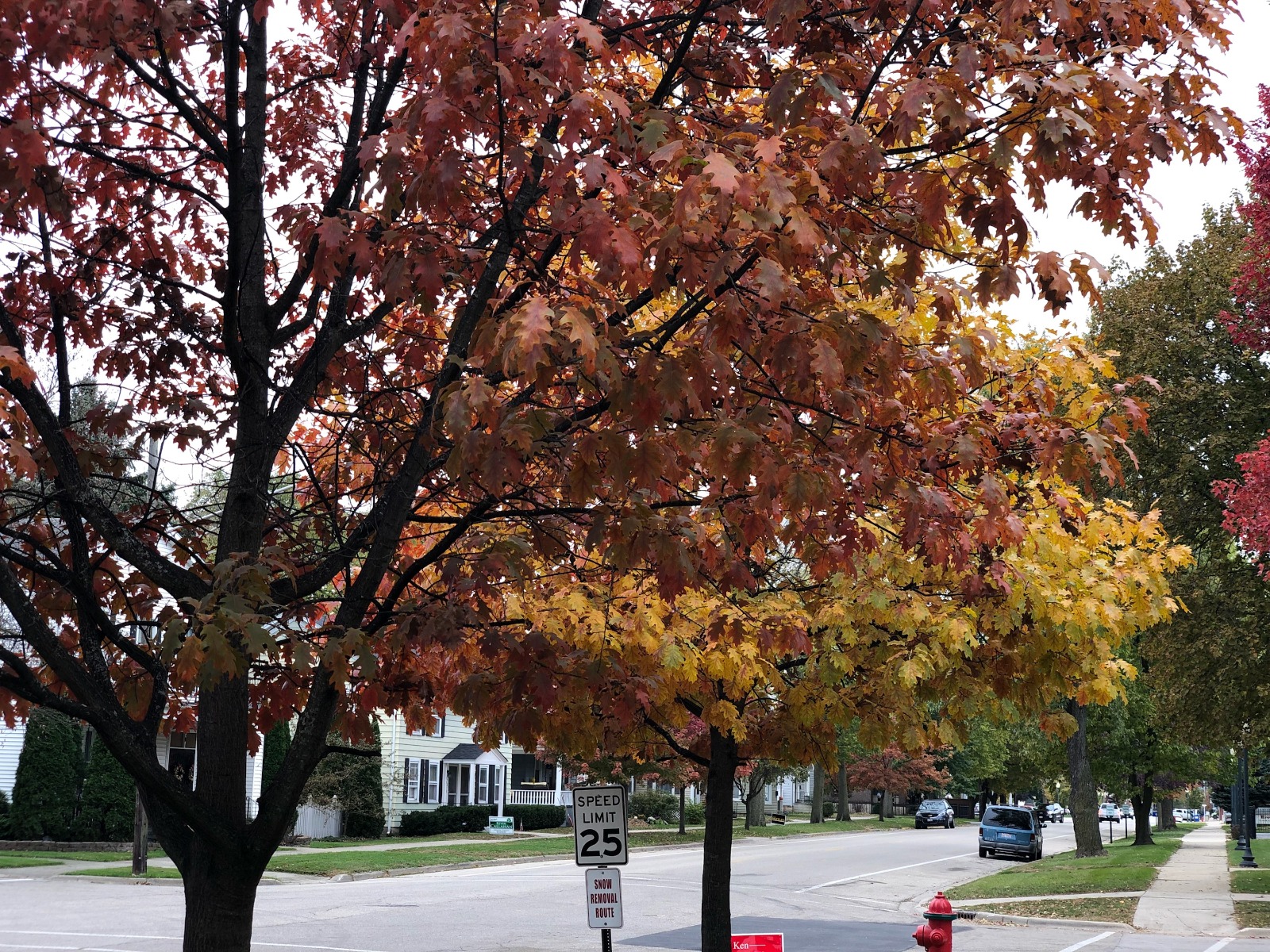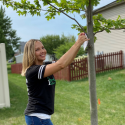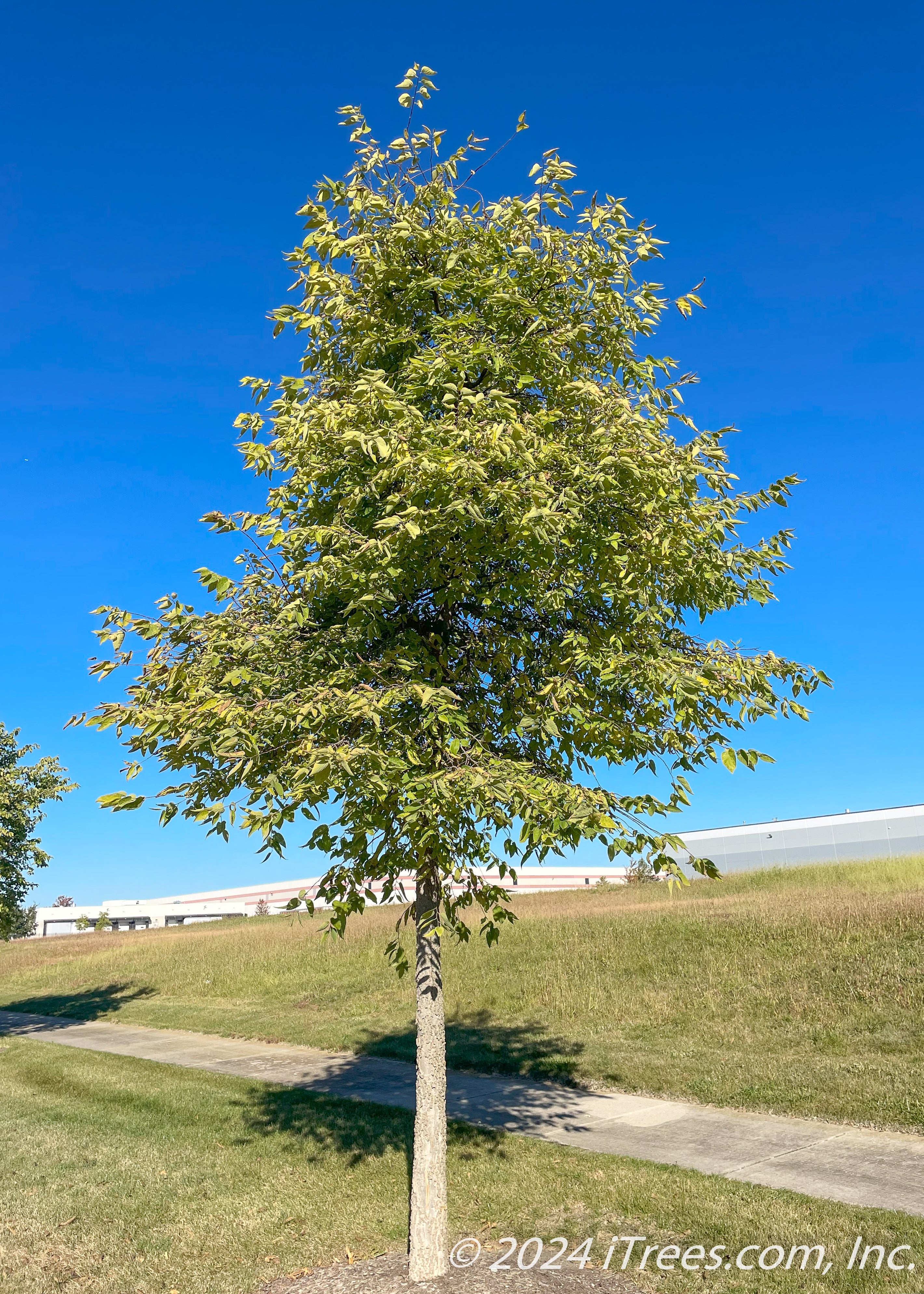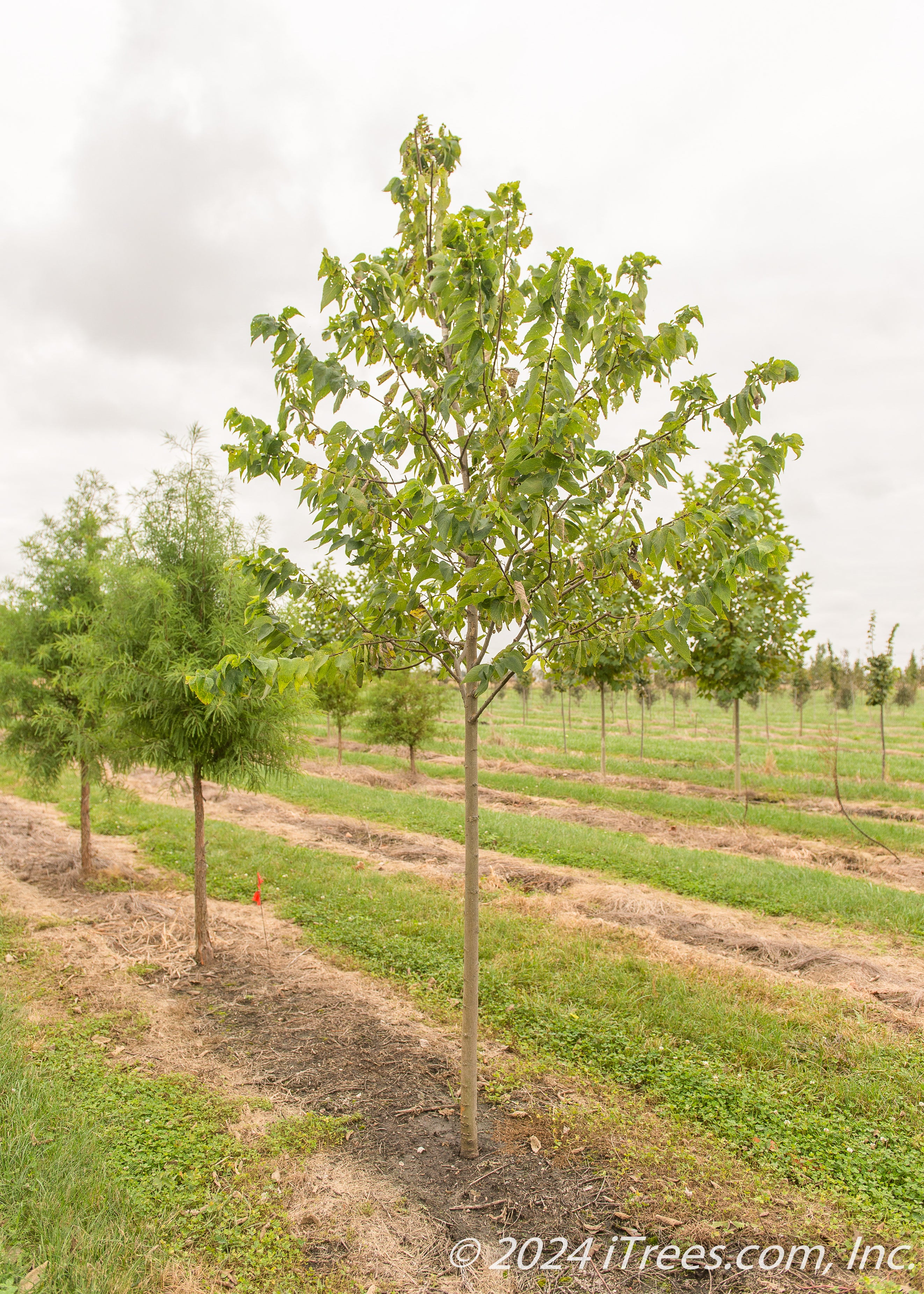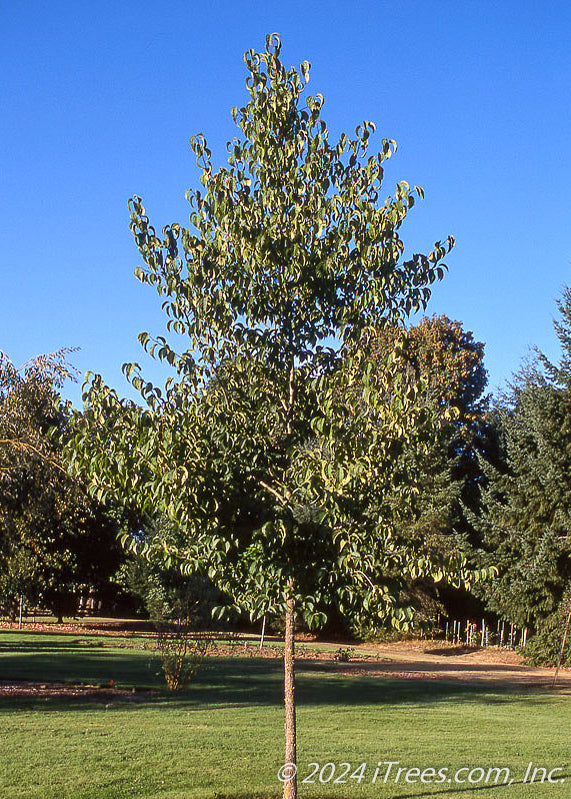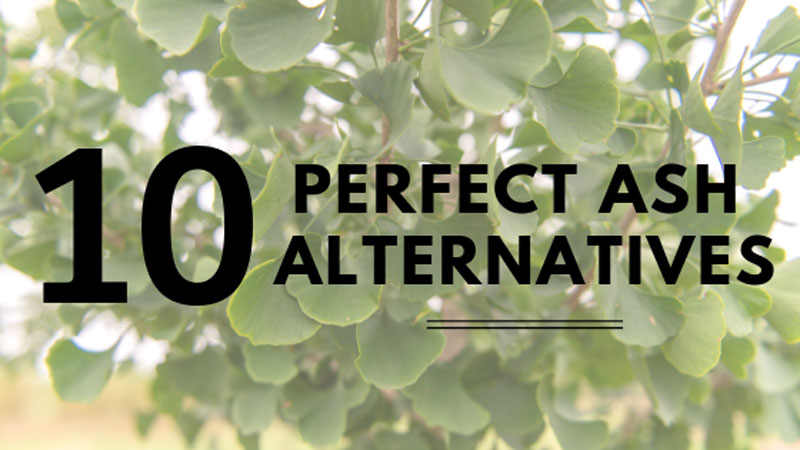
Ash Trees are the perfect example of why we need to diversify tree plantings. This applies not just to community areas like city parks and parkways (street trees), but also in homeowner's landscapes and in neighborhoods. The idea behind diversifying is that if some pest or disease comes along and wipes out an entire species like we are seeing with the Emerald Ash Borer and the Ash Tree, then we still have other tree species alive and thriving that can support the immediate environment.
So, the question begs to be asked, are you ready to replace that dying Ash Tree?
We've got the Top 10 Perfect Ash Tree Alternatives right here →
1. Ginkgo Trees
Ginkgo trees are truly ancient relics, and the species has been around for over 150 million years. The uniquely fan-shaped leaves turn from a lawn green to deep gold in the fall.
2. Pyramidal European Hornbeam
Formal in appearance yet incredibly tough. This tree is drought and heat resistant and has proven to be adaptable to urban growing conditions. It can be hedged or planted individually as a parkway tree or in the landscape as an accent tree.
3. EXCLAMATION!® London Planetree
EXCLAMATION!® London Planetree is extremely durable and can be used nearly anywhere in the landscape. It is a popular choice for parkways, malls, parks, shopping centers, or anywhere where you need a tough, fast growing, and unique shade tree.
4. Native Hackberry
Hackberry is always a safe bet and is a must for places where tough growing conditions exist.
5. Kentucky Coffee Tree
Stark and rugged in the winter, the Kentucky Coffee Tree’s picturesque native, the midwest look becomes tropical in appearance in the summer. Kentucky Coffee Tree features huge fans of doubly compound green leaves which emerge to cast filtered shade.
6. Tulip Trees
One of the tallest native trees of Eastern North America, Tulip Tree features uniquely shaped leaves and large yellow tulip-shaped flowers.
7. American Hophornbeam
American Hophornbeam also is known as Ironwood or Musclewood, is a handsome, small tree that will offer substantial shade and subtle yellow fall color. Pest-resistant and its hardwood weathers damage from ice and snow.
8. Purple Robe Black Locust
Purple Robe Locust has bluish-green foliage which emerges burgundy in spring. The oval leaves turn yellow in fall. It has chains of fragrant rose pea-like flowers with yellow eyes hanging below the branches in late spring. This tree is definitely a head turner worth paying attention to!
9. Skyline® Honeylocust
Podless & thornless, adaptable and with a beautiful pyramidal form, this tree will offer a subtle dappled shade with its lace-like foliage. As the name suggests, this tree offers the perfect contrast to our beautiful Chicagoland skyline.
10. Oak Trees
Oak trees and trees in general help to reduce flooding, clean our air and water. Plant native Oak trees such as White Oak, Swamp White Oak, Bur Oak, Shingle Oak or Chinkapin Oak & choose a nice sunny location so that they can thrive!
- Learn more about the importance of planting Oak Trees in Illinois here → https://itrees.com/blog/post/happy-oaktober
The bonus *VIDEO* below is an excellent example of how to diversify plantings in your yard!
Resources:
J. Frank Schmidt Ash Tree Alternative Data Sheet- https://www.jfschmidt.com/pdfs/JFS%20Shade%20Trees%20Poster%202015.pdf
Be sure to follow us on social media!
